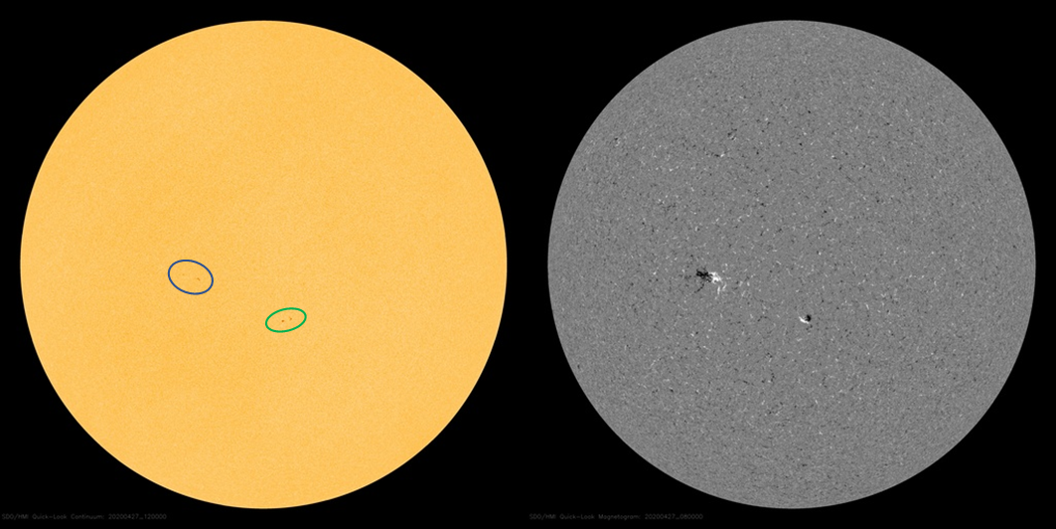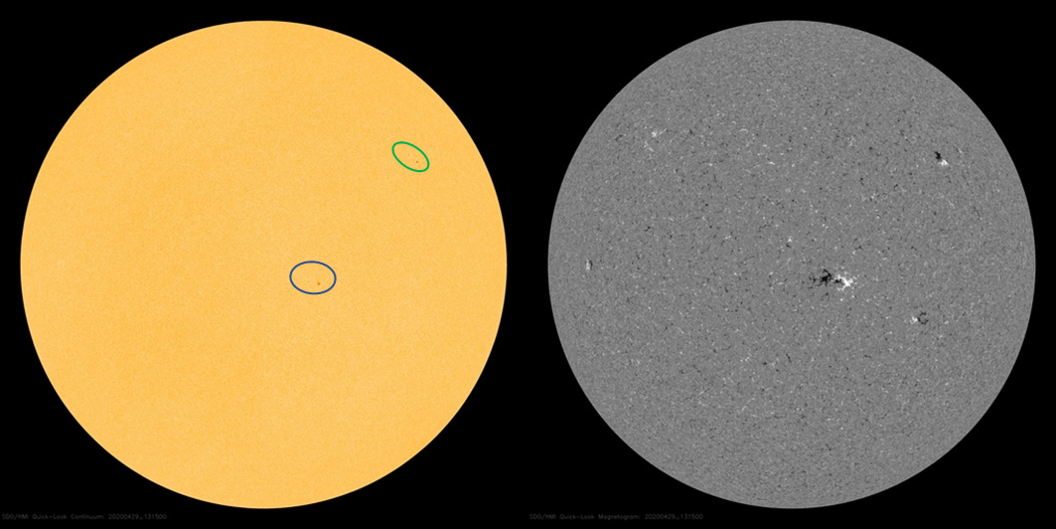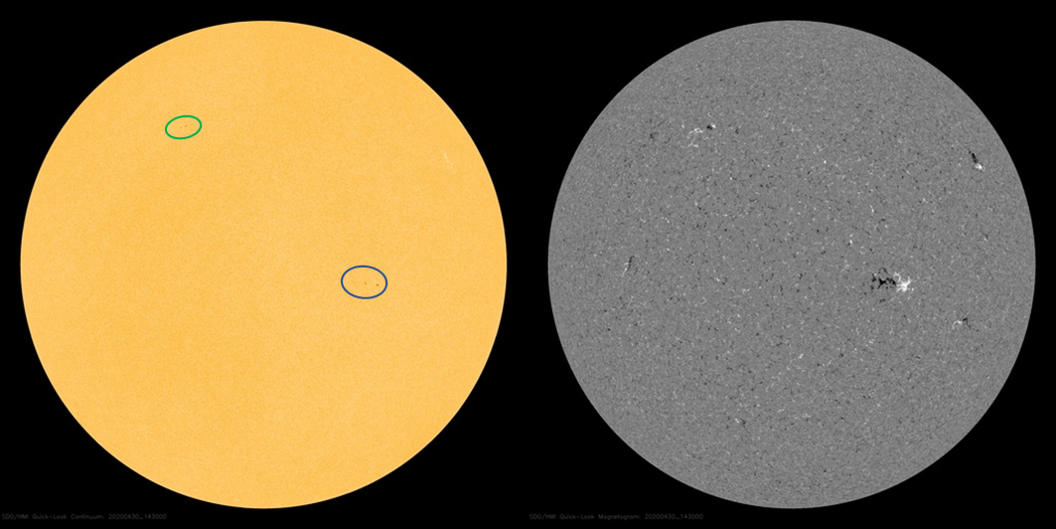After the Sun being spotless from 5 till 24 April, a small sunspot group started to develop close to the solar equator. NOAA 2760 belonged to the old solar cycle 24, and had a latitude of -7 degrees. NOAA 2760 was the most prominent sunspot region of the week. In the SDO/HMI imagery underneath, it is indicated by a blue ellipse in the white light image (left), the magnetogram is on the right and was taken at the same time as the white light image.

On 27 and 28 April, it got the company of a sunspot group at a more southern latitude (-18 degrees, indicated by the green ellipse). NOAA 2761 was a small bipolar region belonging to the new solar cycle 25. This can be seen in the magnetogram above where it has a magnetic polarity opposite (white and black reversed) to that of the old cycle region NOAA 2760. More on magnetic polarities in sunspot regions can be found in this STCE Newsitem.

On 29 April, with NOAA 2761 already being spotless, NOAA 2762 developed in the northwest quadrant at a latitude of 23 degrees (image above). This new partner of NOAA 2760 had the same polarity as the visible old cycle group on the southern hemisphere (white leading), hence belonging to the new solar cycle. NOAA 2762 was also the source of 2 minor B-class x-ray flares, despite its short lifetime of less than a day.

Finally, on 30 April, NOAA 2760 paired up with another SC25 group. This time, a small and very short-lived (hours!) sunspot region was visible in the northeast quadrant at a latitude of 32 degrees (image above). NOAA 2763 had also the same magnetic polarity as NOAA 2760, and thus belonged to the new solar cycle. The appearance of 3 new cycle groups in barely a week time confirms we are gradually leaving solar cycle minimum behind us.





